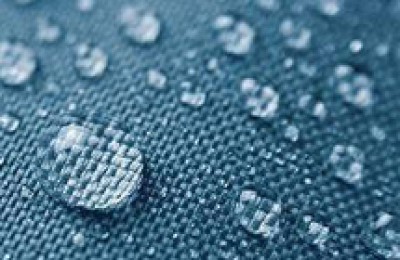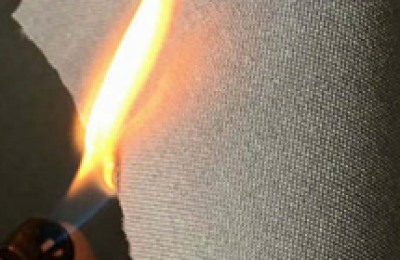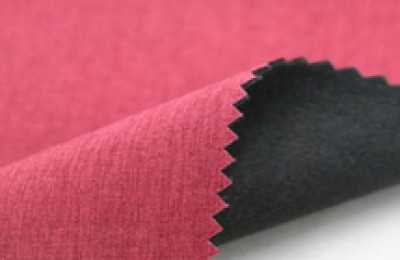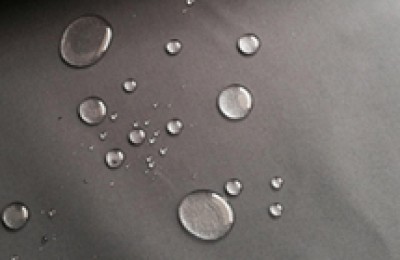The quality management of the spinning process plays an important role in the quality management of cotton spinning enterprises. The environmental suitability of the spinning process, the condition of the equipment, the quality of the spinning equipment, the correctness of the process and process loading, as well as the operating level and sense of responsibility of the operators, all have an impact on the production of the spinning process. Quality has a direct impact. Strengthening the management of various related factors that have a greater impact on product quality in the spinning process can effectively improve the spinning quality of this process, and even achieve twice the result with half the effort.
Equipment maintenance and repair
01 Cycle Management
Maintenance of domestic spinning equipment generally adopts a fixed cycle. The major and minor repair cycles are 3a and 1a, and the partial maintenance (spindle calibration) cycle is generally 3 months depending on the production status and vehicle speed.
The scope of maintenance work is large, the area is wide, the components are standardized and the requirements for unification are high, and the equipment is always in operation. The key maintenance cycle should be shortened appropriately and should be controlled within 8 days to 12 days. Shift maintenance work must be carried out quickly, and patrol inspections, refueling inspections, and shutdown work must be strengthened to ensure that there are no empty spindles on duty, no broken cars in production, and ensure that the equipment is always in good condition.
The setting of the wipe cycle is mainly to prevent the drafting and winding parts from flying and clogging, as well as the lack of oil in the roller bearings. The large resistance of the roller and apron will cause jitter and affect the product quality. The accumulation of dust on the lower apron should be removed in time to ensure the normal and flexible rotation of the apron. Generally, it is controlled within 15 days.
When arranging maintenance plans, attention should be paid to even intervals to avoid interference from adjacent stations. The leveling, wiping, and inspection areas correspond to each other, and work is divided and coordinated. Each takes its own responsibility and supervises each other to facilitate handover and acceptance.
02 Quality inspection
In order to ensure that the quality of all maintenance work fully meets the prescribed standards, quality inspections must be carried out. To detect problems, analyze the causes, fix them in time, and keep records. The content of quality inspection should be comprehensive. In addition to the required inspection items stipulated in the technical conditions for handover of large and small repairs, technical conditions for intactness and technical conditions for overhaul, it should also include the wear limit of some machine parts increased according to production needs, installation tolerances and other items related to production quality.
The equipment after leveling repair must be flat (level, flat, flush), accurate (installation specifications are accurate, spacing is accurate), stable (operating smoothly, vibration is small), tight (contact surface is tight, screws are tightened), and smooth. (channels and contact surfaces are smooth), straight (vertical, straight without bends), light (turning briskly, and the car body is brisk), flexible (flexible movement, flexible shaking) and craftsmanship, safe production, satisfactory operation, and no mechanical breakdown. , No responsibility for defects. Regular dryness and oily yarn are not allowed to appear after wiping the car. The maintenance of rubber rollers, cradle, steel rings, spindles, upper pin frames and other special parts are strictly controlled, random sampling is carried out, and inspections are carried out according to technical conditions.
03 Handover and acceptance
Equipment that has been repaired, whether large or small, must be handed over and accepted one by one. That is to say, the security department will deliver each piece of equipment after major or minor repairs to the maintenance workers and the third shift of operation. The maintenance workers will inspect and accept the equipment according to the “Technical Conditions for Handover”. The abnormal noise of the front gear, vibration of the drum, and damage to the suction box must be inspected and accepted. Air leakage and drafting gear bite, etc. For other machines after maintenance, such as car cleaning, partial maintenance, key maintenance, etc., due to their large scope and wide scope, simplified handover and acceptance procedures can generally be implemented, and opinions of machine operators and operation maintenance workers are actively solicited, and acceptance is carried out according to unified technical conditions.
04 Make good use of specialized spinning equipment to stabilize product quality
When encountering some problems with product quality during production, it is often necessary to find the cause in the spinning equipment. For example: when the spun yarn is not evenly dry, the first thing to do is to check whether there is any problem with the rubber roller; when the spun yarn has a high breakage rate and it is difficult for workers to operate, the first thing to do is to check whether there is any problem with the steel ring or wire ring. Therefore, in order to improve product quality, attention should be paid to the selection of excellent spinning equipment.
The quality and performance of rubber rollers and aprons are closely related to yarn evenness, yarn strength, end breakage rate, rubber roller tangle rate and its own life. The rubber roller and the roller form a drafting and holding jaw under the action of pressure. The deformation of the rubber roller after being pressed mainly depends on the hardness. The lower the hardness, the greater the deformation. However, deformation is an instantaneous manifestation during operation. The spinning process requires that the rubber roller must be able to recover quickly after the pressure disappears, otherwise the drafting motion will run in waves along the circumferential direction. Therefore, the hardness and resilience technical indicators of the rubber roller are very important for spinning drafting, and are also an important factor for excellent spinning quality. The hardness of the rubber roller for spinning pure cotton yarn is required to be Shore A 55 to 68 degrees, while for spinning chemical fiber or blended yarn, it is required to be Shore A 72 to 78 degrees, and the impact elasticity is greater than 31%. Its surface should also be smooth, smooth, cool and dry. The apron is required to have good elasticity, wear resistance and oil resistance, good surrounding condition on the surface of the whisker, good jaw adhesion, and even distribution of lateral friction, which is beneficial to the gripping control of the fiber and extending the service life of the apron. The inner layer of the apron must not undergo creep deformation or plastic deformation under stress to avoid weakening the elasticity and holding power of the apron. The inner layer is required to have relatively high hardness and wear resistance.
There are strict requirements for the selection of steel rings. The cross-sectional shape and geometric dimensional accuracy of the steel ring should meet the requirements of the high-speed rotation performance of the traveler; the surface has high hardness and wear resistance. According to the cross-sectional shape, steel rings can be divided into flat steel rings, tapered steel rings, and Ω-shaped steel rings.�� etc. Generally, flat steel rings are used more often.
The selection of traveler is first based on the performance and shape of the steel ring used, combined with the spinning number and process conditions. Generally, a new steel ring can use a traveler with a higher center of mass and lighter mass, and then gradually increase the weight. Secondly, in order to prevent high breakage and quality fluctuations caused by improper selection of travellers, a small number of spindles can be used for trial spinning of new varieties, and then the entire machine can be used. Once again, there must be dedicated personnel to strengthen on-board inspections and observations, and achieve “three looks”, “two tests”, “one listen” and “five points”.
That is, first, look at the shape and stability of the balloon; second, look at whether the yarn channel is smooth; third, look at the wear of the traveler. The first test is to test the splicing tension. It is required to feel that the splicing tension is elastic and easy to splice without being stuck or repeated splicing. The second test is to test the distribution of doffing breakage. Under normal mechanical conditions, the general rule of breakage is that small yarns account for 50%. %, medium yarn accounts for 20%, and large yarn accounts for 30%. After hearing the feedback from the gear shifter, there are speed changes, steel ring replacement, traveler replacement, and different batch numbers, and attention should be paid to observe and treat them differently. Five points: the big yarn has a higher breakage, the wire ring is lighter; the small yarn has a higher breakage, and the traveler is heavier; the fast machine for the same number of yarns, the steel wire ring is lighter; the polyester and cotton type yarn machine of the same number, the steel ring is heavier. One thing, knitting yarn is a little heavier than woven yarn traveler with the same number of yarns. Finally, it is required that the temperature and humidity should be controlled stably. Generally, when the temperature is high, the traveler should be controlled lightly. When the relative humidity is high, the quality of the balloon section yarn increases and the balloon convex shape becomes larger, so the traveler should be controlled heavier.
Maintenance workers should make frequent rounds to eliminate crooked spindles and crooked balloons, and adjust the position of the fenders appropriately. When flat turning and changing varieties, special attention should be paid to the size of the gap of the cleaner. If the gap is too large, it will not be able to remove the accumulated dust on the traveler, and it will easily cause the yarn to fluff and ball. If the gap is too small, the traveler will be damaged. The channel is not smooth, resulting in increased end breaks and affecting the quality of spinning.
Optimize textile processes
Improve spinning quality
Process design is the primary link in process management and the main basis for spun yarn production. It must be considered through investigation and research, a reasonable spinning process must be formulated, and the approval procedures must be strict. For the same machine model, same raw materials, and same variety, the process design should be unified. When the models are different, the actual results should be used as the starting point, and uniformity cannot be forced. All process items related to yarn quality, such as basis weight, yarn twist, front roller speed, roller spacing, etc., are determined by the laboratory. All process items directly related to the workshop, such as pressurization, steel rings, travellers, rubber rollers, rubber rings, etc., must be approved by the workshop director before execution.
After the process is determined, the inspection of process loading should also be strictly carried out. The purpose of process loading is to reduce the process differences between ingots and ingots and between stations, and strive to ensure that the loading process meets the process design requirements, laying the foundation for stably improving product quality. Base. Spun yarn is produced with multiple machines and multiple machine parts. If the specifications and installation of the machine parts are different, the errors will be large and exceed the allowable limit of the process, which will inevitably affect the stability of the quality. The inspection of the process is mainly carried out by the preservation and maintenance quality inspectors, who keep records one by one and each item, and calculate the pass rate of the process on the vehicle.
Process testing and research are key links in continuously improving product quality. On the basis of summarizing experience, based on raw materials, seasonal changes, quality indicators, physical quality, user feedback and other requirements, a process testing plan is formulated and carried out in a planned and step-by-step manner. Scientific experiments and scientific analysis are carried out technically and theoretically to achieve the purpose of ensuring stable production and continuously improving product quality. Process testing and research should first solve the weak links in current production and rationally arrange long-term projects. Combined with the adoption of new processes, new technologies, new equipment and new materials, we continue to innovate.
</p







